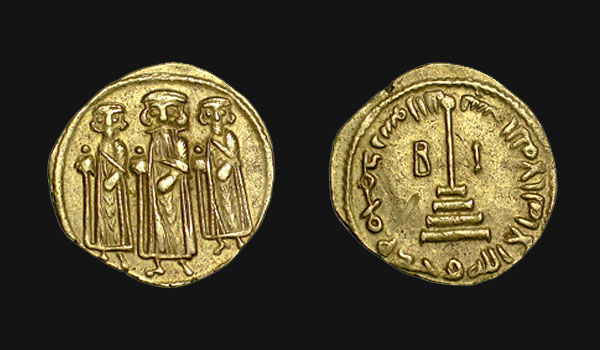Eurydice Georganteli, well-known Byzantine scholar at the University of Birmingham, UK, and current Marie Curie Senior Research Fellow in Harvard’s History of Art and Architecture department, recently delivered the Ilse and Leo Mildenberg Memorial Lecture titled Byzantine Money: The Politics and Aesthetics of a World Currency, at the Harvard Art Museums. Drawing from the comprehensive collections of coins and seals at the Harvard Art Museums and the Dumbarton Oaks Research Library and Collection, Georganteli examined the political and economic influence of the Byzantine Empire in medieval Europe and beyond.
Byzantine coins tell incredibly rich stories about their origins as well as their travels beyond the empire. Because coinage was heavily regulated by imperial decree, the story of a coin’s history is written right on its face—its value, the year it was struck, and the name of the mint where it was created.
Once minted, these coins traveled to all corners of the known world—east to China, north to Rus’ (a region of Russia and the Ukraine and Scandinavia), south to Africa, and west to Spain—via the Byzantine Empire’s vast diplomatic, military, and pilgrimage network. The numerous coin finds that continue to be discovered, from the UK to India, attest to the vast extent of the Byzantine market.
Georganteli shared several examples of how iconography on Byzantine coins was imitated in foreign currencies. Caliph Abd al-Malik, ruler of Umayyad Caliphate in Syria, modified the Byzantine coin by replacing the Christian cross with a pillar. Chinese imitative coins and their Byzantine prototypes found in China echo the movement of people and precious commodities along the Silk Route.
By the end of her talk, Georganteli’s illustration of the Byzantine Empire’s political, economic, and cultural cachet across Europe and beyond was quite clear. Beginning November 16, when the new Harvard Art Museums open to the public, visitors will have the opportunity to encounter these small, yet powerful objects that weave the tale of the once great Byzantine Empire.
To honor the memory of renowned numismatist and scholar Leo Mildenberg (1912–2001) and his years of friendship with Harvard University, a fund was established by his friends and colleagues and endowed in 2005 by his wife, Ilse Mildenberg-Seehausen.




